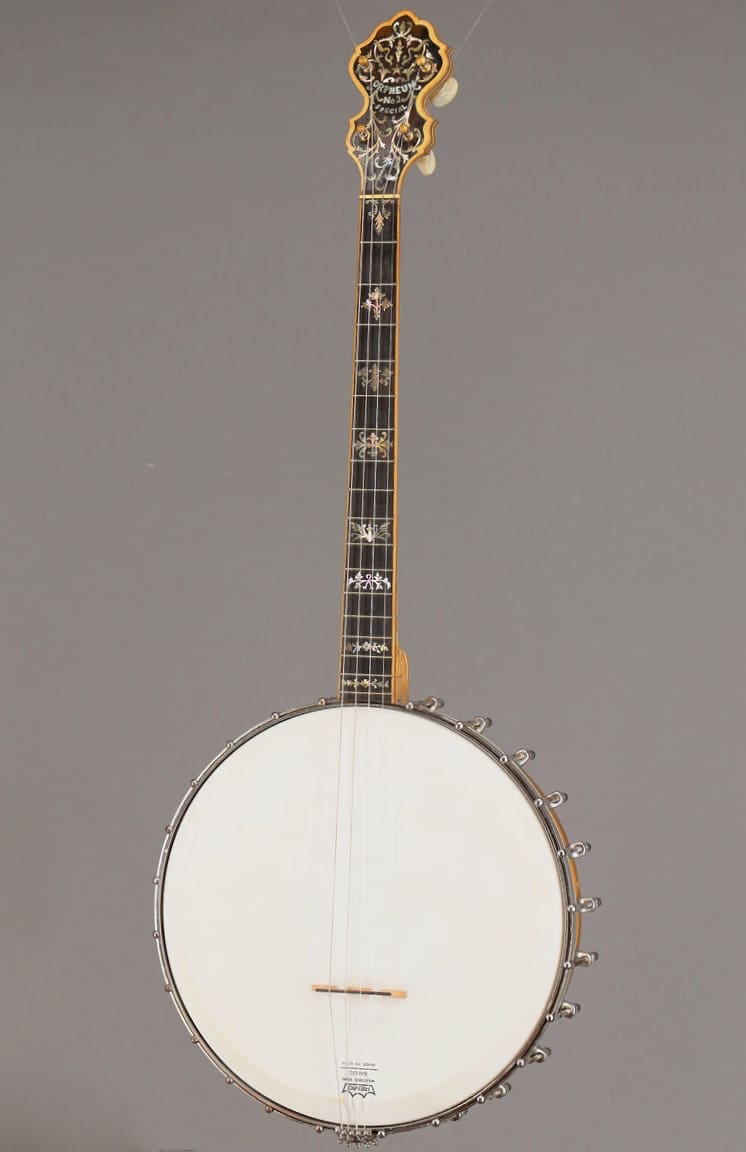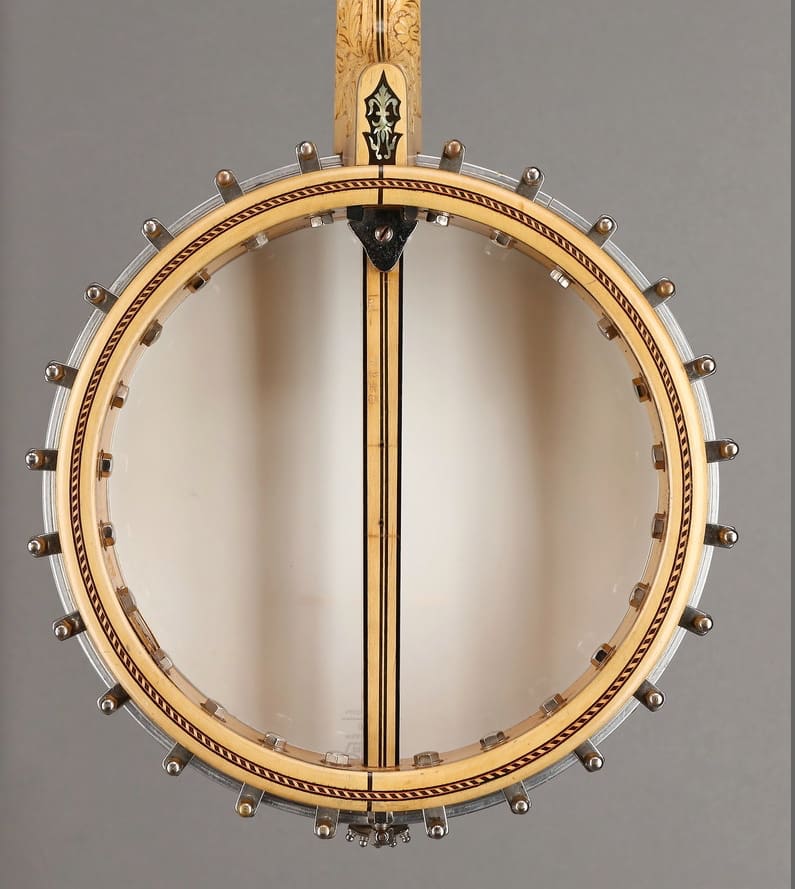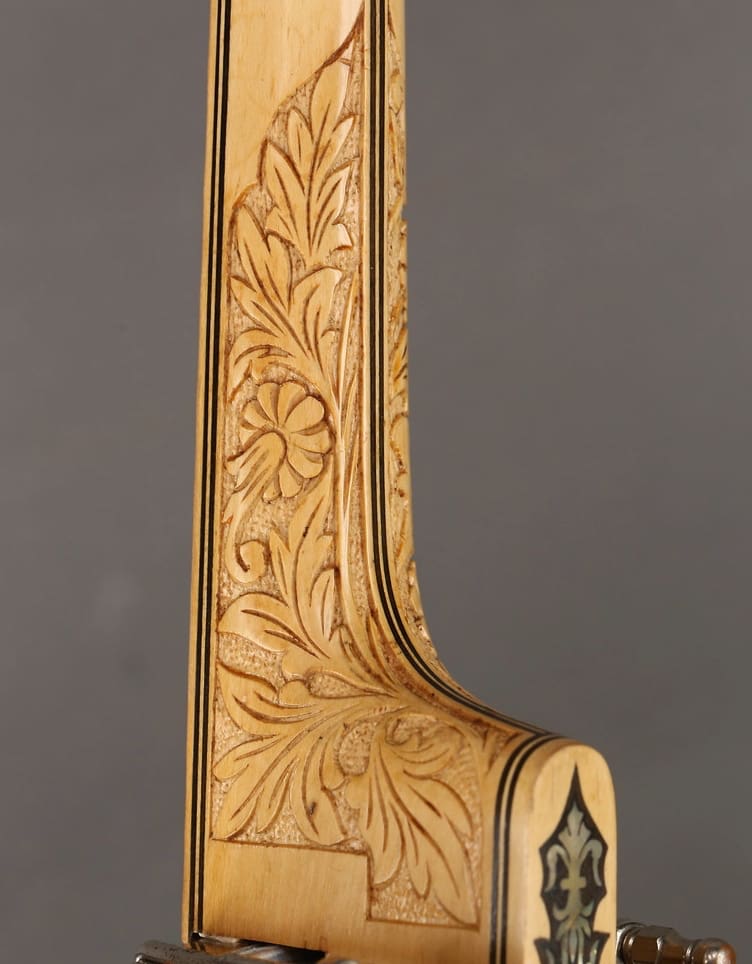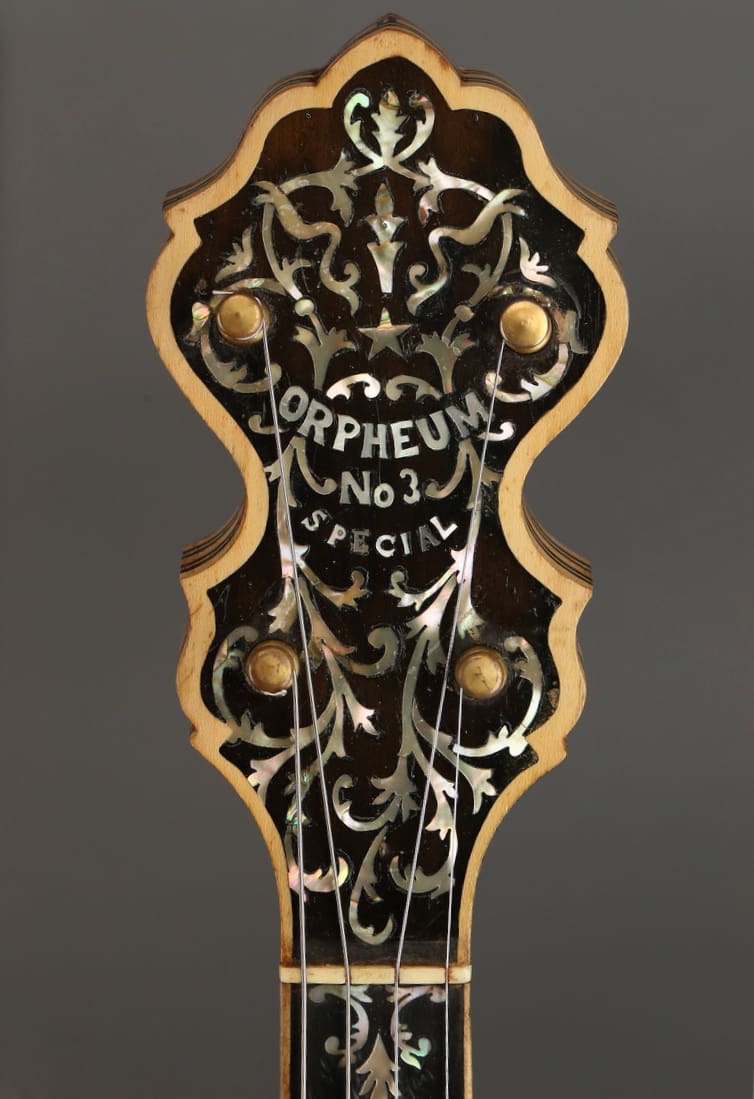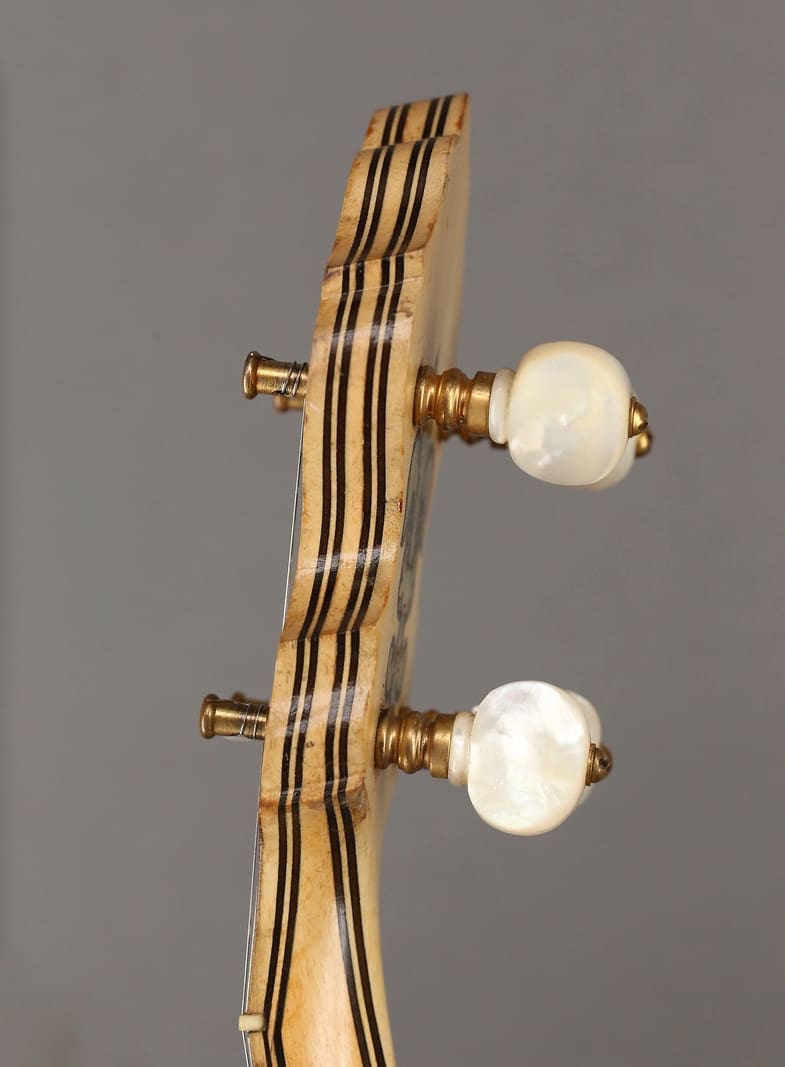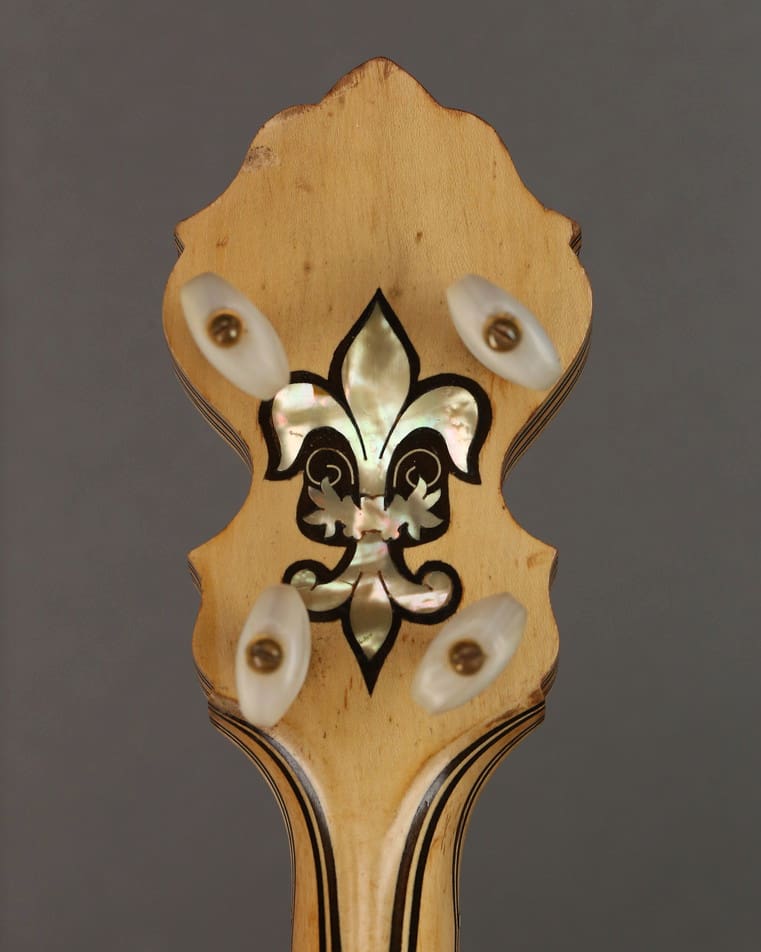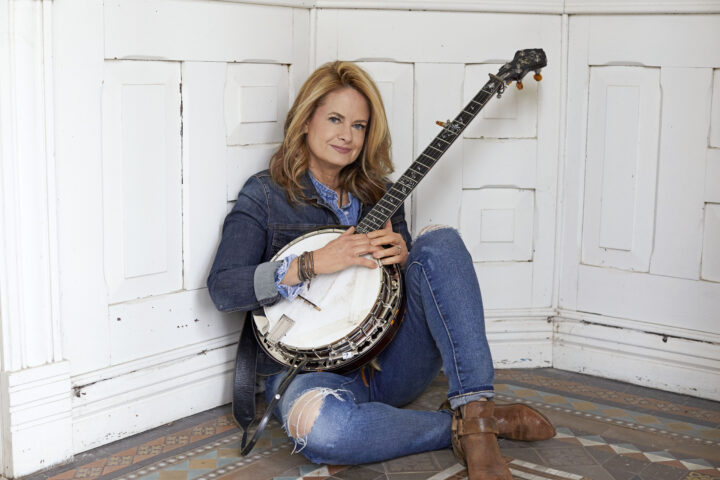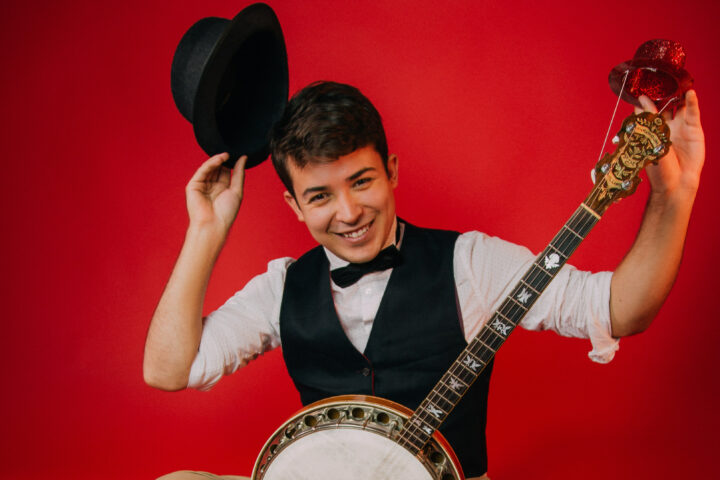Circa 1920 Orpheum #3 Special Tenor Banjo
Orpheum banjos were made by William Rettburg and William Lange, two music industry veterans who purchased the bankrupt Buckbee banjo company in 1897. In its day, Buckbee was the largest banjo maker in America, a firm that made instruments for Dobson, Benary, Farland, Bruno and perhaps a dozen more companies. The banjos made by Buckbee were primarily in what we think of as the minstrel style, with thin wooden shells, no metal tone rings and large, usually fretless necks. Rettburg and Lange had figured out early on that the instruments that Buckbee was making were quickly going out of fashion. By 1903 they had developed a simple tone ring that helped increase the banjo’s volume along with giving it brighter crisper tone. The Orpheum banjo proved to be a big success and by 1915, it was one of the most popular banjos styles in America.
Orpheum banjos came in a variety of styles including five-strings, banjo mandolins, plectrums and tenors, like today’s Catch. Orpheum banjos were very well made and they have a lighter, delicate tone than the instruments from Gibson and Epiphone that come out a few years later. The #3 Special was the fanciest model in the catalog although a couple of more ornate models were available by special order. This model boasts exquisite pearl inlay, heel carvings and wooden marquetry. The neck and shell are made of maple and the gold friction pegs have solid pearl buttons.
Sadly, as nice as they are, Orpheum tenor banjos don’t have much of a following today. The problem is that they are too primitive for contemporary tenor banjo players but at the same time they are too technologically advanced for pickers looking for something to play old-time string band or minstrel music on. Current tenor banjos players don’t like the Orpheum’s short, 17-fret neck and lack of a resonator, two features that are just too archaic for jazz or Celtic music, the two main sources of tenor banjo players in our modern world. Most old-time players don’t really care for the bright, crisp tone the tone ring gives and the fact that they would need to have a five-string neck made for it to make it playable for frailing. Which is too bad because these banjos are so well made. Back when my wife used to play mandolin, she had a #2 Orpheum that sounded really nice on fiddle tunes and she says that the short, 17-fret neck was very easy for her to play. This particular banjo is currently at Gryphon Stringed Instruments where it is priced at $1100. Just out of curiosity, I asked around and I couldn’t find a luthier who would be willing to make just the headstock inlay for that amount, let alone doing the heel carving.
Click here for the original listing.
